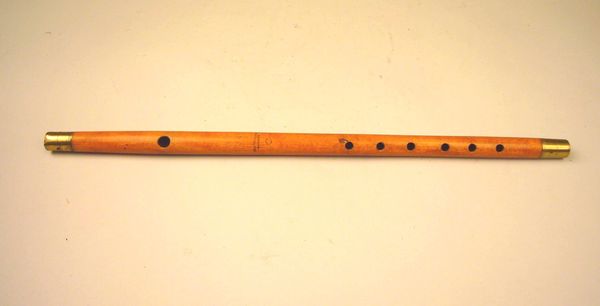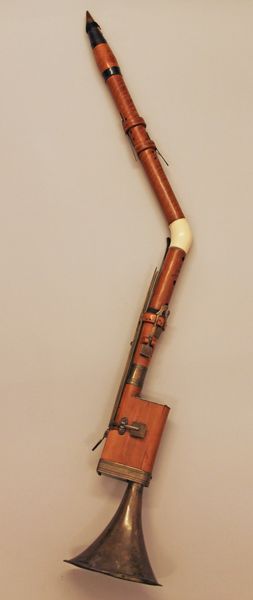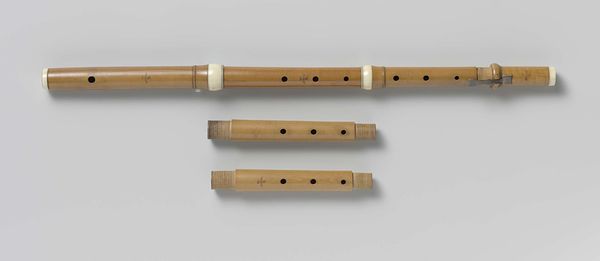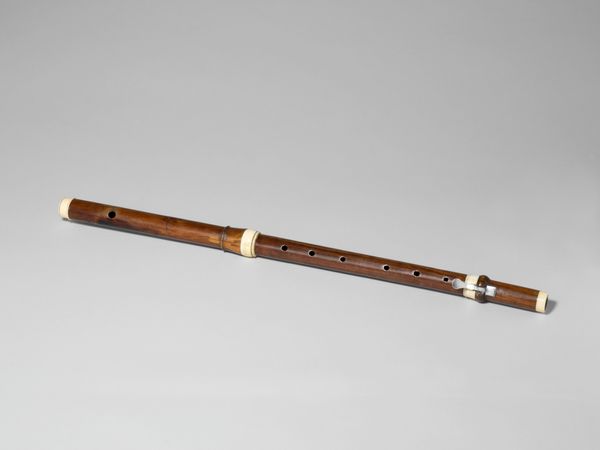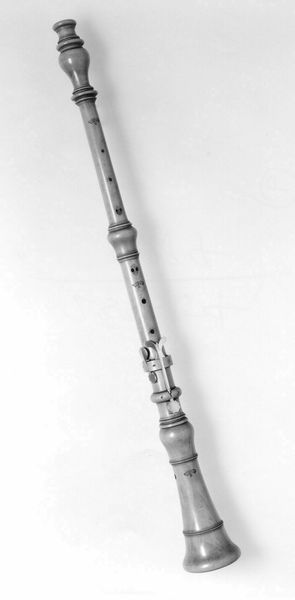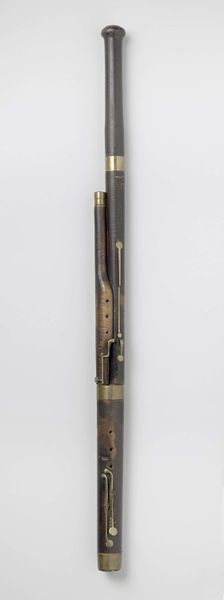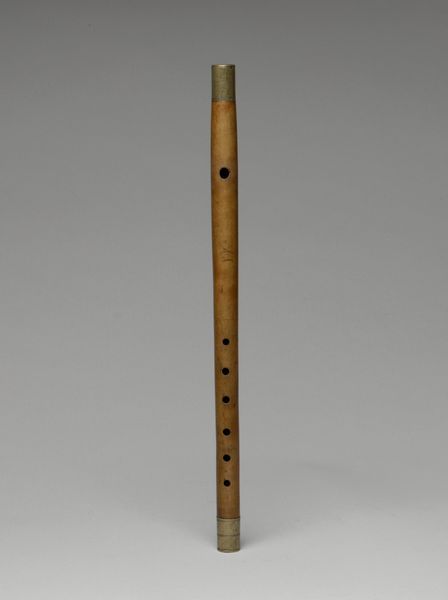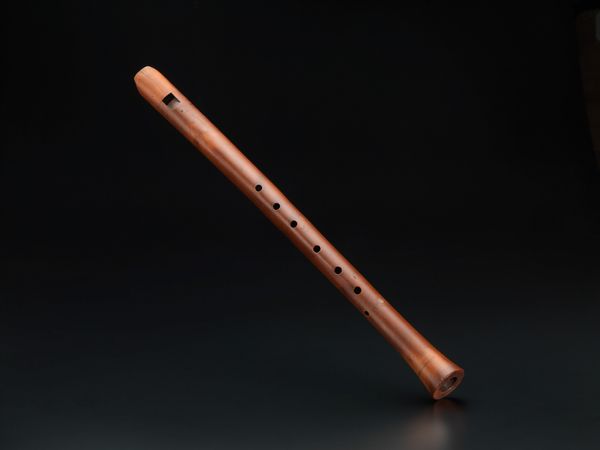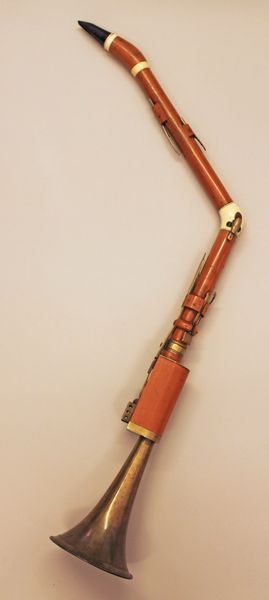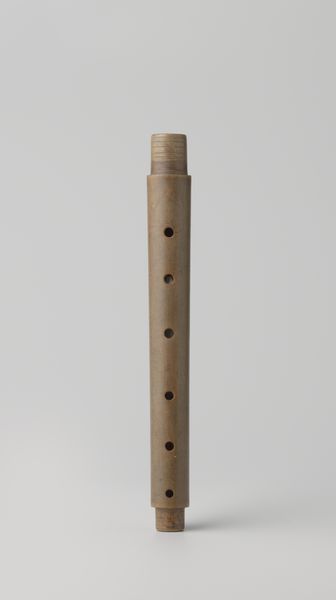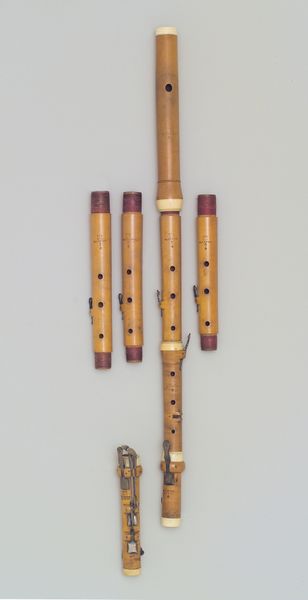
wood
#
wood
#
musical-instrument
Dimensions: L. 19 7/8 x Embouchure L. 17 3/16 in. (50.5 x 43.7 cm)
Copyright: Public Domain
Editor: Here we have a "Transverse Flute in F" made sometime between 1830 and 1880 by William A. Pond & Company. It seems to be made primarily of wood. I’m struck by how elegantly simple the instrument is. What stands out to you about it? Curator: I see a carefully crafted object deeply embedded within social and economic realities. Wood was a readily available resource, but the labor involved in transforming it into a precise musical instrument speaks volumes about 19th-century production methods. Notice the precision of the bore, the careful placement of the tone holes. Editor: Absolutely, the level of craftsmanship is striking. How do we elevate it beyond mere function? Curator: The very idea of "mere" function is the issue here. We traditionally elevate artworks based on concepts of individual genius and aesthetics, neglecting the social and economic underpinnings. How was this flute marketed, consumed, and by whom? Understanding those questions is key to appreciating the object's complex cultural life. This flute was made for someone to use. Editor: So, considering the time period, could owning an instrument be a status symbol? Would the average person have had the leisure time to even learn to play? Curator: Precisely. Owning this flute might signify a level of economic comfort. The wood, and how it was sourced, shaped, and the distribution channels for the finished product tells us about the social structures that determined who had access to music and leisure during this time. The music the flute might have been used to play provides other details for examination. Editor: I hadn't thought of it in those terms. Examining the raw materials and means of production reveals such a different story than simply focusing on the music itself. Curator: Exactly! Thinking materially forces us to challenge established artistic hierarchies and confront the economic factors underlying what we consider art. I hope our chat inspires fresh exploration beyond formalism, opening into considerations of materials, techniques and the societal values that underscore the object’s being.
Comments
No comments
Be the first to comment and join the conversation on the ultimate creative platform.
